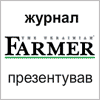Ministry of Economy: Consumer inflation on the outcomes of 2022 was 26.6% - significantly below forecasts

In December 2022, consumer inflation remained at the level of the previous month - 0.7% per month. Annual inflation amounted to 26.6%. This figure was significantly lower than the figures predicted in the first half of the year. The Ministry of Economy of Ukraine told what put pressure on prices and gave a forecast for the coming months.
"Such a relatively low consumer inflation rate indicates that during a full-scale war, which Europe has not seen in almost eighty years, Ukraine's economy has withstood and successfully adapted to functioning in war conditions.
Despite concerns about the development of hyperinflationary processes and the high probability of inflation rates exceeding 30%, under such force majeure conditions, the inflation rate was conditionally comparable to a number of European countries. According to preliminary data of Eurostat, consumer inflation in Latvia was 20.7%, Lithuania - 20%, Estonia - 17.5%. Such a price for a full-scale war can be considered an achievement for the Ukrainian economy," said First Deputy Prime Minister - Minister of Economy of Ukraine Yuliia Svyrydenko.
According to the data provided by the Ministry of Economy of Ukraine, throughout the war inflation was practically formed by two main factors of the war:
the first - the extent of destruction of infrastructure (including energy) and logistics and, accordingly, the speed of economic recovery and adaptation;
the second - the level and speed of migration as a factor of demand and a factor of providing labor resources for production needs (and, consequently, the formation of the supply of goods and services).
The destructive pressure of the war is constantly compensated by the state's policy of shifting the burden of war consequences from business and the population to the budget (support programs, fixing the hryvnia exchange rate, freezing tariffs for the population), which became possible due to financial assistance from international partners.
In December, the main component of inflation in general was an increase in food prices, which had the same rate (0.7%) as the overall level (0.7%). At the same time, the formation of prices in this group, in addition to the consequences of the destruction of energy facilities and, consequently, the increase in production costs due to the use of more expensive energy sources, also depended on the influence of the usual seasonality factor.
However, food imports contribute to the stabilization of the market, which reinforces the domestic supply of goods, without adding impetus to the growth of prices due to:
- relative stability of food prices on world markets,
- fixing the hryvnia exchange rate and its relative stability in the cash market.
On the other hand, the narrowing demand, which was typical for all months of the war, continued to restrain the growth of prices for some other groups of goods and services, in particular for clothing and footwear (down 2.6% in December), household goods, household appliances and current housing maintenance ("-" 0.2%), recreation and culture ("-" 0.1%).
The restraining effect on the overall inflation rate of the Government's moratorium on the growth of utility tariffs remains - the price rates for housing, water, electricity, gas and other fuels in December remained insignificant - 0.1% (0.2% in the previous month).
The Ministry of Economy of Ukraine expects that at the beginning of 2023, in the absence of new serious challenges, the overall dynamics of domestic prices will remain in the current trend of moderate growth, which will be driven by further successful adaptation of the economy and the population to the conditions of the ongoing war.
IC UAC according to the MEU
- 618 reads







